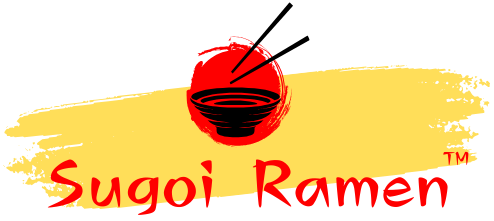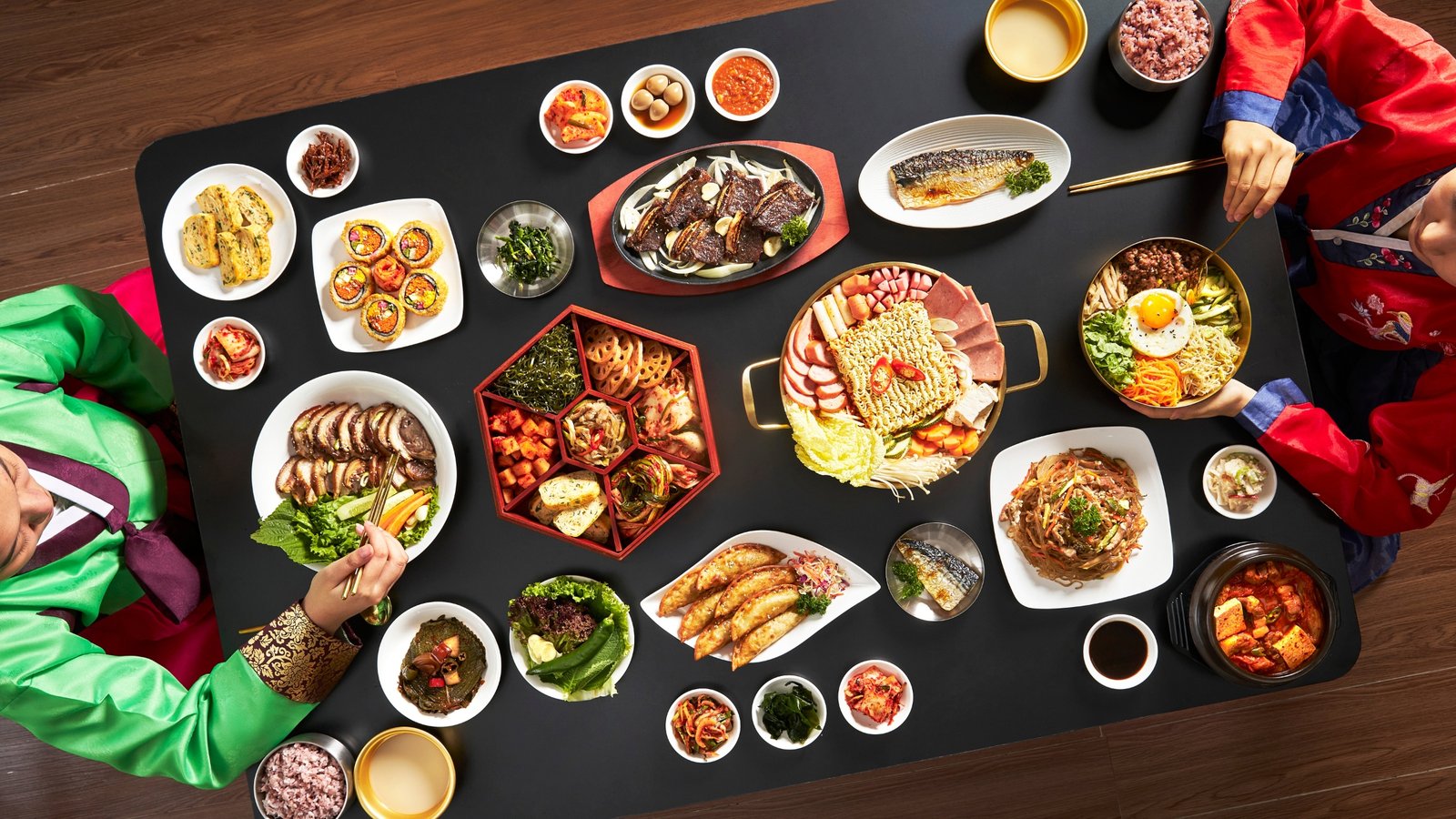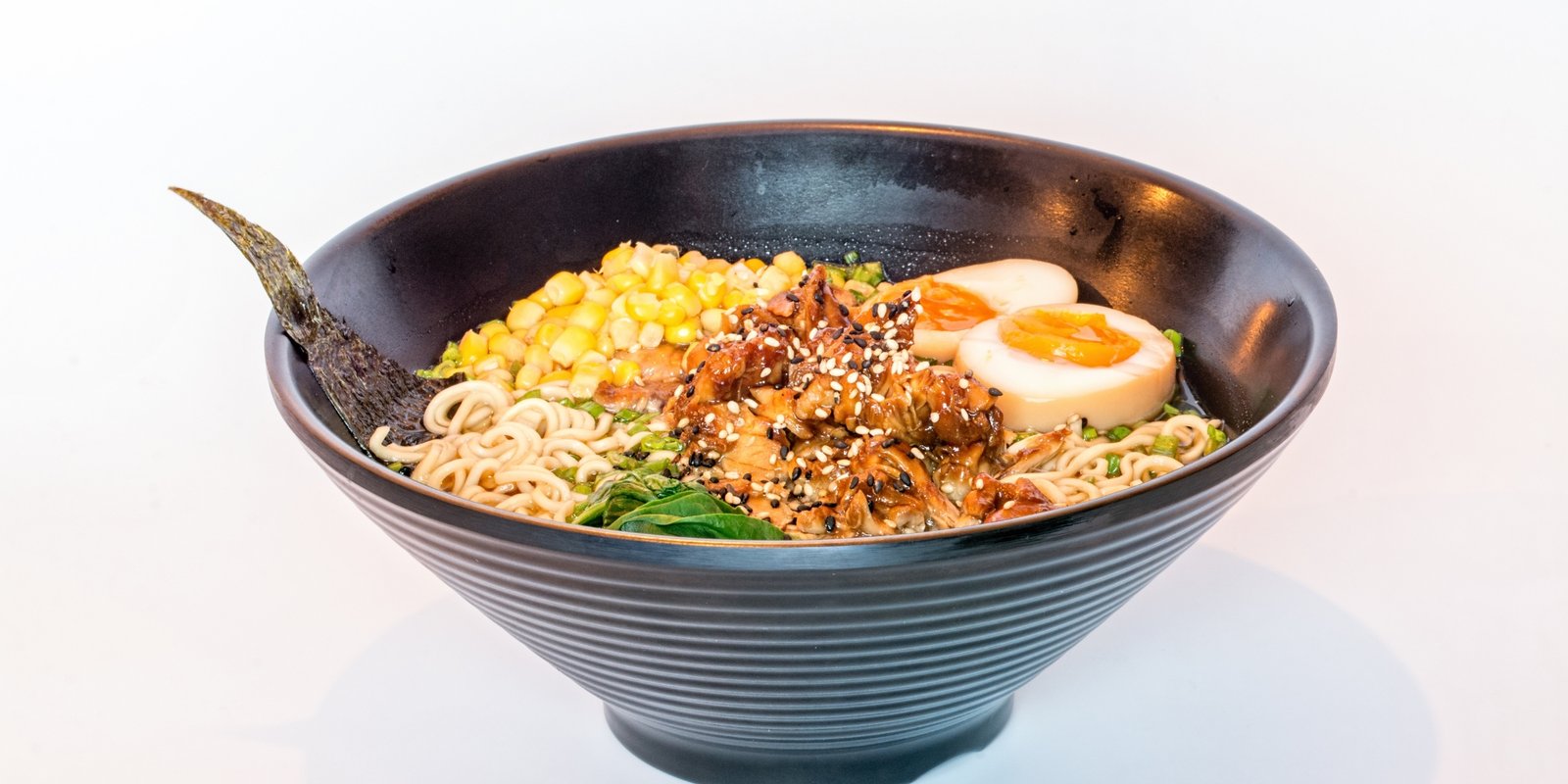Korean dramas, also known as K-dramas, have captivated global audiences with their engaging plots, heartfelt emotions, and stunning visuals. But one aspect that stands out is their portrayal of food, which plays a crucial role in connecting characters, expressing emotions, and showcasing Korean culture. These dishes often appear as symbols of comfort, love, and community. Let’s explore 8 dishes you’ve seen in K-dramas and delve into their cultural significance.
1. Jokbal (Braised Pig’s Trotters)

Jokbal is a savory dish made from pig’s trotters braised in a mixture of soy sauce and spices. It’s a popular late-night meal in South Korea, often enjoyed with accompaniments like kimchi and dipping sauces. Due to its labor-intensive preparation, many opt to order it from specialized restaurants, making it a staple in Korean home delivery culture.
Cultural Significance: Jokbal is associated with late-night dining and social gatherings. Its rich flavor and hearty nature make it a comfort food for many Koreans.
K-Drama Appearances:
- My Roommate is a Gumiho: The character Shin Woo-yeo orders jokbal for Lee Dam when she’s unwell, showcasing care and consideration.
- Dali and the Cocky Prince: Jokbal is featured during team dinners, highlighting its role in social settings.
2. Jjigae (Korean Stew)
Jjigae refers to a variety of Korean stews, often made with ingredients like kimchi, tofu, vegetables, and meats. It’s a common household dish, providing warmth and comfort, especially during colder months.
Cultural Significance: Jjigae represents the communal aspect of Korean dining, often shared among family members. It’s a versatile dish with numerous variations, each reflecting regional and personal preferences.
K-Drama Appearances:
- Itaewon Class: Kimchi jjigae is frequently featured, emphasizing its status as a staple comfort food.
- Hospital Playlist: The characters often share jjigae during their meals, highlighting friendship and camaraderie.
3. Miyeok Guk (Seaweed Soup)
Miyeok Guk is a nutritious soup made from seaweed, often consumed on birthdays and by postpartum mothers due to its health benefits. It’s traditionally believed to aid in recovery and provide essential nutrients.
Cultural Significance: Consuming miyeok guk on birthdays is a Korean tradition, symbolizing gratitude and remembrance of one’s mother. It’s also associated with well-being and recovery.
K-Drama Appearances:
- The Heirs: Characters consume miyeok guk during birthday celebrations, reflecting traditional customs.
- My Love from the Star: The dish is featured, showcasing its role in Korean celebratory meals.
4. Kalguksu (Knife-Cut Noodle Soup)
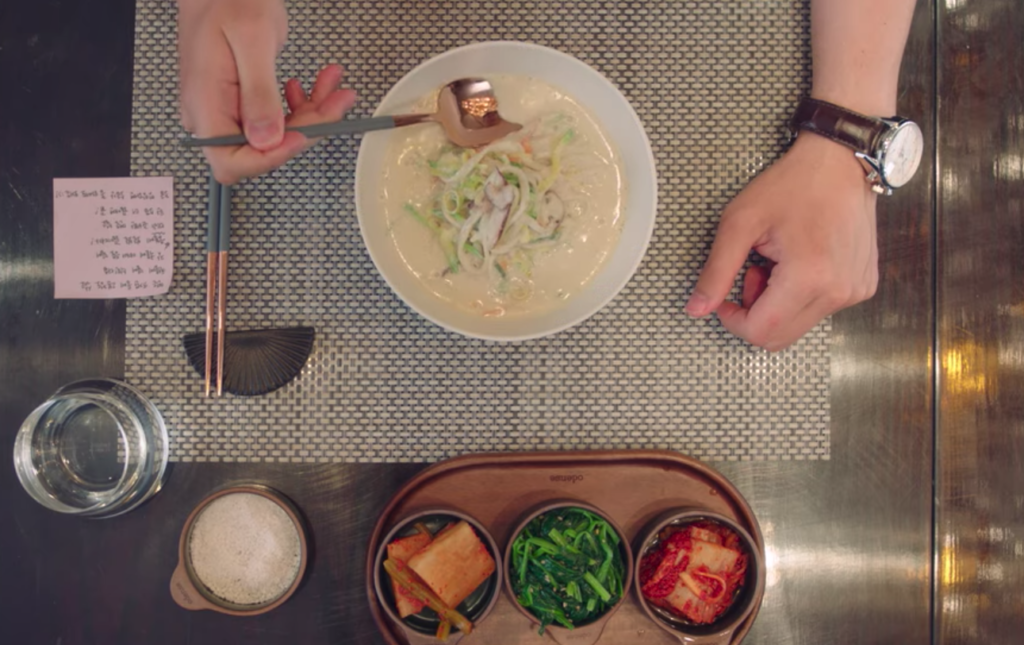
Kalguksu is a comforting noodle soup made with handmade, knife-cut wheat flour noodles served in a rich broth, often garnished with vegetables and sometimes seafood or meat.
Cultural Significance: Kalguksu is often enjoyed during the summer, providing comfort and relief. The handmade noodles signify care and tradition in Korean cuisine.
K-Drama Appearances:
- Let’s Eat: The dish is showcased, highlighting its popularity in Korean dining culture.
- When the Camellia Blooms: Characters share kalguksu, emphasizing its role in bringing people together.
5. Mandu (Dumplings)
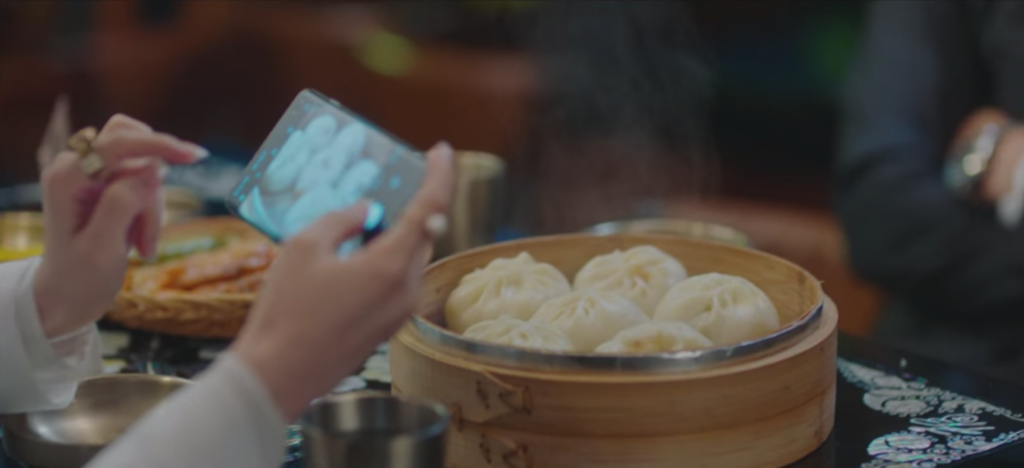
Mandu are Korean dumplings filled with a mixture of meat and vegetables. They can be steamed, boiled, pan-fried, or deep-fried, making them a versatile dish enjoyed in various forms.
Cultural Significance: Mandu is often prepared during Korean New Year (Seollal) and symbolizes good fortune. The process of making mandu is usually a family activity, strengthening bonds and traditions.
K-Drama Appearances:
- Crash Landing on You: Characters enjoy mandu, showcasing its role in Korean cuisine.
- Kingdom: Mandu is featured, reflecting historical aspects of Korean food culture.
6. Samgyetang (Ginseng Chicken Soup)
Samgyetang is a nourishing soup featuring a whole young chicken stuffed with glutinous rice, ginseng, garlic, and jujubes, simmered until tender. It’s traditionally consumed during the hottest days of summer to replenish energy.
Cultural Significance: Samgyetang is believed to restore vitality and improve health, embodying the Korean principle of “iyeol chiyeol” (fighting heat with heat). It’s a dish that combines culinary tradition with medicinal benefits.
K-Drama Appearances:
- My Lovely Sam Soon: The dish is featured, highlighting its role in Korean culinary traditions.
- The King: Eternal Monarch: Characters enjoy samgyetang, showcasing its cultural significance.
7. Bungeoppang (Fish-Shaped Pastry)
Bungeoppang is a popular street food, especially during winter. It’s a fish-shaped pastry filled with sweet red bean paste, though modern variations include custard or chocolate.
Cultural Significance: Bungeoppang is associated with nostalgia and comfort, often evoking childhood memories. It’s a treat that brings warmth during cold seasons and is enjoyed by people of all ages.
K-Drama Appearances:
- Vincenzo: The lead characters, Hong Cha-young and Vincenzo Cassano, share bungeoppang, highlighting its role in Korean street food culture.
- Reply 1988: The pastry is featured, emphasizing its nostalgic value.
8. Tteokbokki (Spicy Stir-Fried Rice Cakes)
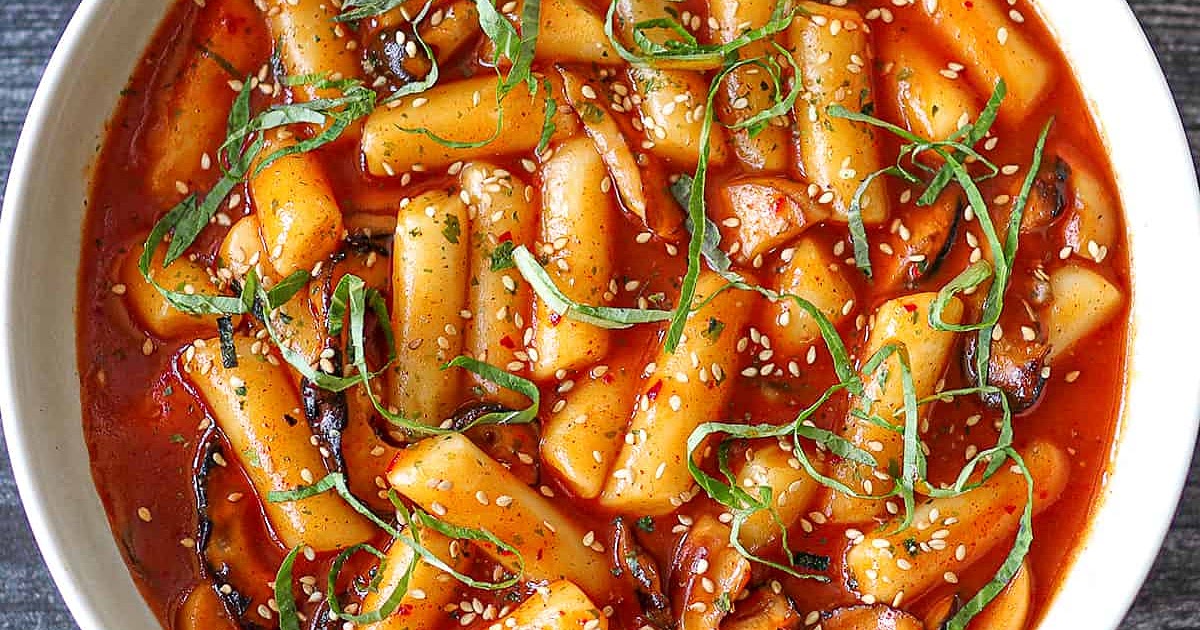
Tteokbokki is one of the most popular street foods in Korea. Made with chewy rice cakes, fish cakes, and a spicy-sweet red chili sauce, this dish is both comforting and bold. It’s often served with boiled eggs and green onions, making it a vibrant and filling snack.
Cultural Significance:
Tteokbokki represents Korea’s street food culture, which is deeply ingrained in everyday life. Its affordability and addictive flavor make it a favorite among students, couples on casual dates, and friends looking for a quick bite.
K-Drama Appearances:
- Itaewon Class: Park Sae-ro-yi’s humble beginnings as a food vendor feature tteokbokki as a key dish in his menu, showcasing its cultural and economic significance.
- Start-Up: The characters share tteokbokki during casual outings, symbolizing friendship and the simplicity of youthful connections.
Read Also : Iconic Korean Foods We’ve Loved Watching in K-Dramas
10 Must-Try Ramen Dishes Inspired by Authentic Flavors
Fast Food Franchise Investment: Launch Your Sugoi Ramen Outlet in Less Than a Month
Conclusion
These 8 iconic dishes from K-dramas are not just food; they are reflections of Korean culture, tradition, and lifestyle. From street food like tteokbokki and bungeoppang to hearty meals like samgyetang and kimchi jjigae, these dishes offer a culinary journey through Korea’s vibrant food scene. Their frequent appearances in K-dramas highlight their importance in everyday Korean life, making them a must-try for anyone exploring the world of Korean cuisine.
Whether you’re inspired by K-dramas or simply a food enthusiast, trying these dishes is an opportunity to connect with Korea’s rich heritage and flavors. So, why not experience the taste of K-drama magic in your own kitchen or at a local Korean restaurant?
FAQ’s
Q1. Why is food so prominent in K-dramas?
Food is deeply ingrained in Korean culture, symbolizing relationships, emotions, and everyday life, making it a key storytelling element.
Q2. Can I find these dishes outside Korea?
Yes, many Korean restaurants worldwide offer these iconic dishes, and some can even be made at home using online recipes.
Q3. What’s the most popular K-drama food?
Ramyeon and tteokbokki are among the most commonly featured and iconic foods in K-dramas.
Q4. Why is Korean BBQ often shown in group settings?
Korean BBQ, like samgyeopsal, is a social dish meant for sharing, reflecting Korea’s emphasis on community and bonding.
Q5. Are these dishes difficult to make at home?
Some, like kimbap and kimchi jjigae, are beginner-friendly and can be made with simple ingredients, while others may require specialty items.
